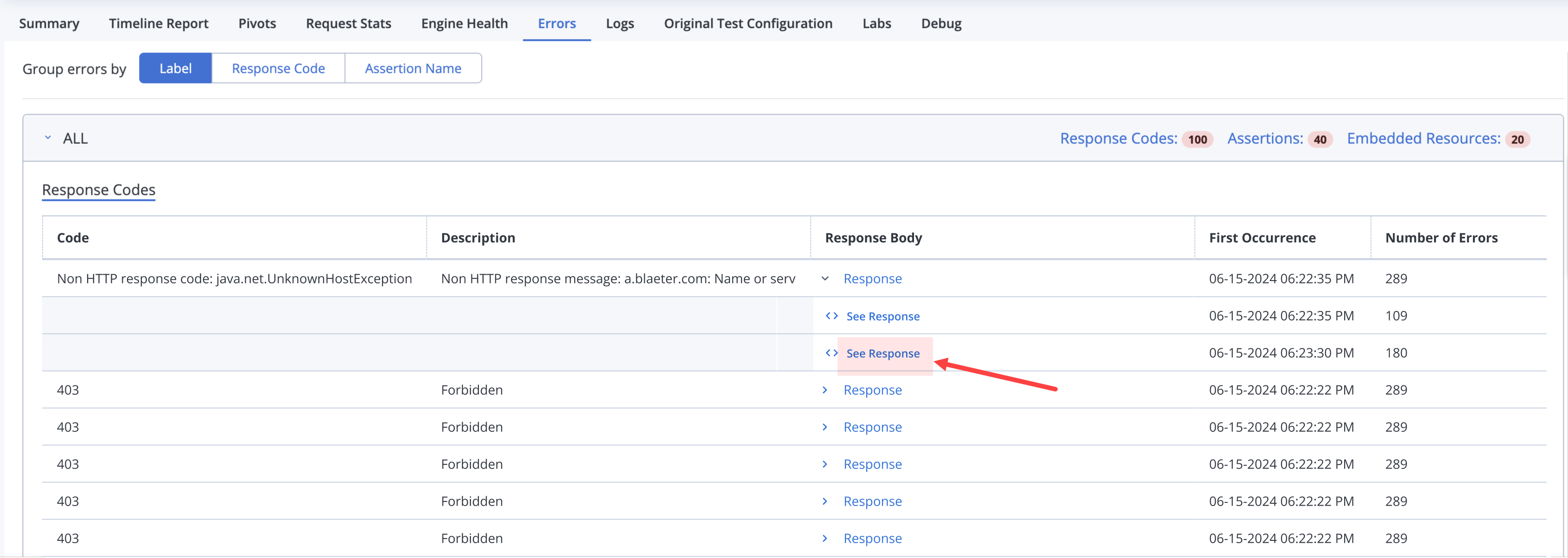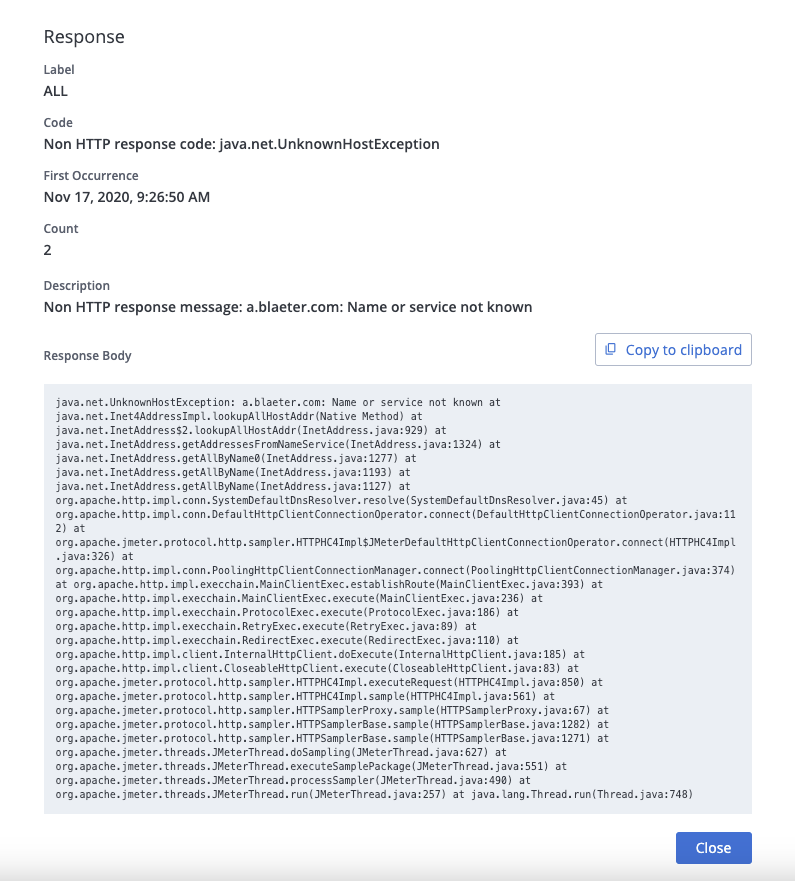Errors report
The Errors tab contains the errors that were received by the web-server under the test as a result of HTTP request. The report displays all errors received during the test run, categorized by labels (pages) and error types.
View Errors report
Follow these steps:
- In the Performance tab, select Reports. The most recent reports are shown on top.
- Click Show all reports and select a report to view its details.
-
Click the Errors tab.
You can see all errors received during the test run.
-
(Optional) Move the timeline sliders or Filter by Date and Time to narrow down the time. The results for your selected time period will show in the results table.
- Group errors by:
- Label
- Response Code
- Assertion Name
Types of errors
We report these types of errors:
- Top requests
- Assertions
- Failed embedded resources
For each error, the following information displays:
- Response code
- Response message
- Number of failed requests
View the response body
You can access the response data of failed samples on the Errors tab. This feature can help you:
-
Quickly identify problems
-
Save time searching through logs
-
Instantly see issues during test runs
-
Avoid excessive memory usage on local machines
Admins and account owners can enable or disable this feature on the account settings page. For more information, see Manage Environments.
Key Features
-
First 10 Unique Errors. Only the first 10 unique error response bodies per scenario or test are displayed. This constraint is designed to help manage storage and performance.
-
Live Display. The response data is available while the report is running, not just post-completion.
-
Scope. This feature is available for all performance tests, shared reports, external reports, and multi-test reports.
Steps
-
Open a test report and navigate to the Errors tab.
-
In Group errors by, select Label, Response Code, or Assertion Name.
The Response Codes table opens, containing the following columns:
- Code - Lists the specific error codes detected.
- Description - Provides a brief description of each error.
- Response Body - Contains links labeled `Response` that you can click to view the detailed error response body.
- First Occurrence - Shows the time stamp of the earliest occurrence of an error or error response body during a test. This information can help you identify and address the root cause of issues by showing the initial instance of errors.
- Number of Errors - Shows the number of times each error occurred during the test.
-
In the Response Body column, click any table cell containing a Response link.
If response data exists, one or more See Response links are shown.
-
To open a detailed view of the specific error response body, click See Response. The data is shown in raw HTML format. The dialog contains the following fields:
- Label - Indicates the type or category of the response.
- Code - Displays the specific error code.
- First Occurrence - Shows the time stamp of the earliest occurrence of an error or error response body during a test. This information can help you identify and address the root cause of issues by showing the initial instance of errors.
- Count - Indicates the total number of times the error occurred.
- Description - Contains a brief description or message associated with the error.
- Response Body - Displays the detailed error response body, including the stack trace.
-
(Optional) Click Copy to clipboard to copy the response body.
Jump to next section:




